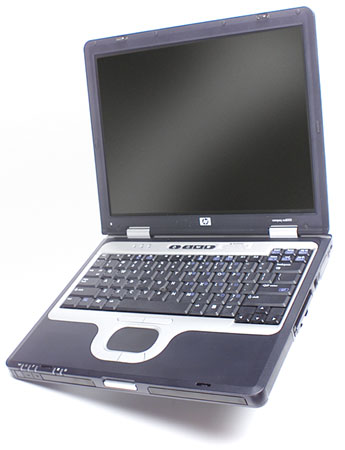 The nc6000
is a 5-lb, 1"-thick Centrino notebook from HP. It's intended primarily
for business users. This page will tell you how to get the nc6000
hardware working under Debian GNU/Linux.
The nc6000
is a 5-lb, 1"-thick Centrino notebook from HP. It's intended primarily
for business users. This page will tell you how to get the nc6000
hardware working under Debian GNU/Linux.
![]()
 The nc6000
is a 5-lb, 1"-thick Centrino notebook from HP. It's intended primarily
for business users. This page will tell you how to get the nc6000
hardware working under Debian GNU/Linux.
The nc6000
is a 5-lb, 1"-thick Centrino notebook from HP. It's intended primarily
for business users. This page will tell you how to get the nc6000
hardware working under Debian GNU/Linux.
Section "Device"
Identifier "Generic Video Card"
Driver "radeon"
EndSection
The Radeon framebuffer console (CONFIG_FB_RADEON) works fine. Use vga=791 on your kernel command line to get 1024x768 @ 16bpp.
Section "InputDevice" Driver "synaptics" Identifier "touchpad" Option "Device" "/dev/psaux" Option "Protocol" "auto-dev" Option "LeftEdge" "1900" Option "RightEdge" "5600" Option "TopEdge" "1800" Option "BottomEdge" "4300" Option "FingerLow" "25" Option "FingerHigh" "30" Option "MaxTapTime" "180" Option "MaxTapMove" "220" Option "VertScrollDelta" "100000" Option "HorizScrollDelta" "100000" Option "MinSpeed" "0.01" Option "MaxSpeed" "0.10" Option "AccelFactor" "0.0007" EndSection
You might want to set ath_pci up to load at boot time. Add ath_pci to the /etc/modules file, and add ath0 to your /etc/network/interfaces file:
auto lo eth0 ath0
...
iface ath0 inet dhcp
pre-up /sbin/iwconfig ath0 essid <name-of-network>
If you use several different networks and your wireless card supports
ESSID scanning (the Atheros does), you can use my essid-pick script to choose from a
prioritized list.
iface ath0 inet dhcp
pre-up /usr/sbin/essid-pick ath0 <network1> <network2> ...
xmodmap -e keycode 223 = F20 xmodmap -e keycode 160 = F15 xmodmap -e keycode 174 = F16 xmodmap -e keycode 176 = F17
sudo setkeycodes e00a 89 e008 90 xmodmap -e keycode 123 = F18 xmodmap -e keycode 128 = F19The wireless button doesn't seem to generate any key codes, but it does somehow disable the wireless hardware. Hit it again to re-enable the wireless, but you may have to ifdown/ifup to get it operational again.
| Patrick Reynolds <email> | other projects |